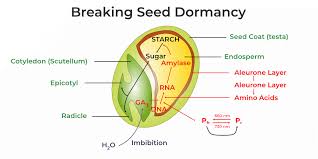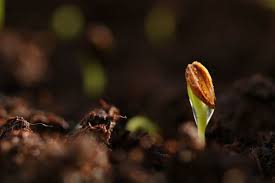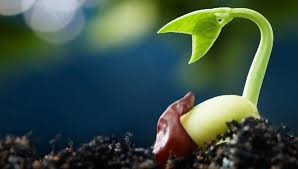Dormancy refers to a condition in which seeds fail to germinate even under favorable environmental conditions like water, temperature, and air. This phenomenon is essential for the survival of various plant species.
It has been observed that while some fruit seeds, such as mango and citrus, germinate immediately under favorable conditions, others, like apple, pear, and cherry, remain dormant.
This characteristic, known as dormancy, allows certain species to endure unfavorable climatic conditions and only germinate once these conditions have passed. Dormancy may persist indefinitely unless specific treatments are applied to terminate it.
Types of Seed Dormancy
Various types of dormancy can be observed in seeds:
1. Exogenous Dormancy
This dormancy results from factors external to the embryo. The tissues surrounding the embryo inhibit germination by limiting water uptake, restricting radicle emergence, affecting gaseous exchange, and supplying or retaining inhibitors around the embryo.
It can be classified into three types:
i. Physical Dormancy (Seed Coat Dormancy): The seed coat or covering becomes hard and impermeable, preventing water and gases from entering. This is common in fruits like olive, peach, and cherry.
ii. Mechanical Dormancy: Here, the seed covering restricts radicle growth, delaying germination. Examples include walnuts, where the seed coating is too strong to allow germination.
iii. Chemical Dormancy: Some seeds contain chemical inhibitors, such as phenols and abscisic acid, which prevent germination. This is typical in citrus, cucurbits, and tomatoes.
2. Endogenous Dormancy
This type of dormancy is caused by internal factors within the embryo, such as rudimentary development. It can be categorized into:
i. Morphological Dormancy (Rudimentary Embryo): Seeds with underdeveloped embryos, common in plants like Ranunculus and holly, exhibit this type of dormancy.
ii. Physiological Dormancy: In this case, seeds require specific conditions, such as chilling, to terminate dormancy. The process of stratification (chilling seeds in moist conditions) is often used to break dormancy.
iii. Double Dormancy: Some seeds have both hard seed coats and dormant embryos, requiring two years or more to break dormancy.
3. Secondary Dormancy
Secondary dormancy occurs when seeds adapt to unfavorable germination conditions. For example, high or low temperatures or prolonged darkness can induce secondary dormancy.
Read Also: Rabbit Hutch Equipment and Requirements
Methods of Breaking Seed Dormancy in Agriculture

Several agricultural techniques are used to break seed dormancy, ensuring better germination for various horticultural crops:
1. Softening Seed Coat and Coverings
This method involves softening the seed coat to improve water and gas absorption. One way to achieve this is through scarification, which can be mechanical, chemical, or through hot water treatment.
i. Mechanical Scarification: Involves scratching or breaking the seed coat using tools like sandpaper or mechanical scarifiers.
ii. Acid Scarification: Seeds are treated with sulfuric or hydrochloric acid to soften the seed coat.
iii. Hot Water Scarification: Seeds are immersed in hot water and then soaked as the water cools, improving germination.
2. Stratification (Moist Chilling)
Stratification involves chilling seeds in layers of moist sand to overcome dormancy. This is commonly used for temperate fruit seeds like apple and peach.
i. Outdoor Stratification: Seeds are stored in pits or raised beds outdoors, covered with moss to maintain moisture.
ii. Refrigerated Stratification: Seeds are refrigerated after soaking in water and placed in alternating layers of sand to encourage uniform germination.
Read Also: Types of Rabbit Housing
Role of Hormones in Seed Dormancy

Plant hormones like abscisic acid (ABA) and gibberellins (GA) regulate seed dormancy. ABA promotes dormancy, while GA promotes germination. Hormonal treatments can break dormancy in seeds, enhancing germination and seedling growth.
In conclusion, understanding seed dormancy and the methods to break it is crucial for successful crop production. Dormancy mechanisms allow plants to survive adverse conditions, and by employing various techniques, farmers can improve seed germination and ensure uniform crop establishment.
Do you have any questions, suggestions, or contributions? If so, please feel free to use the comment box below to share your thoughts. We also encourage you to kindly share this information with others who might benefit from it. Since we can’t reach everyone at once, we truly appreciate your help in spreading the word. Thank you so much for your support and for sharing!

